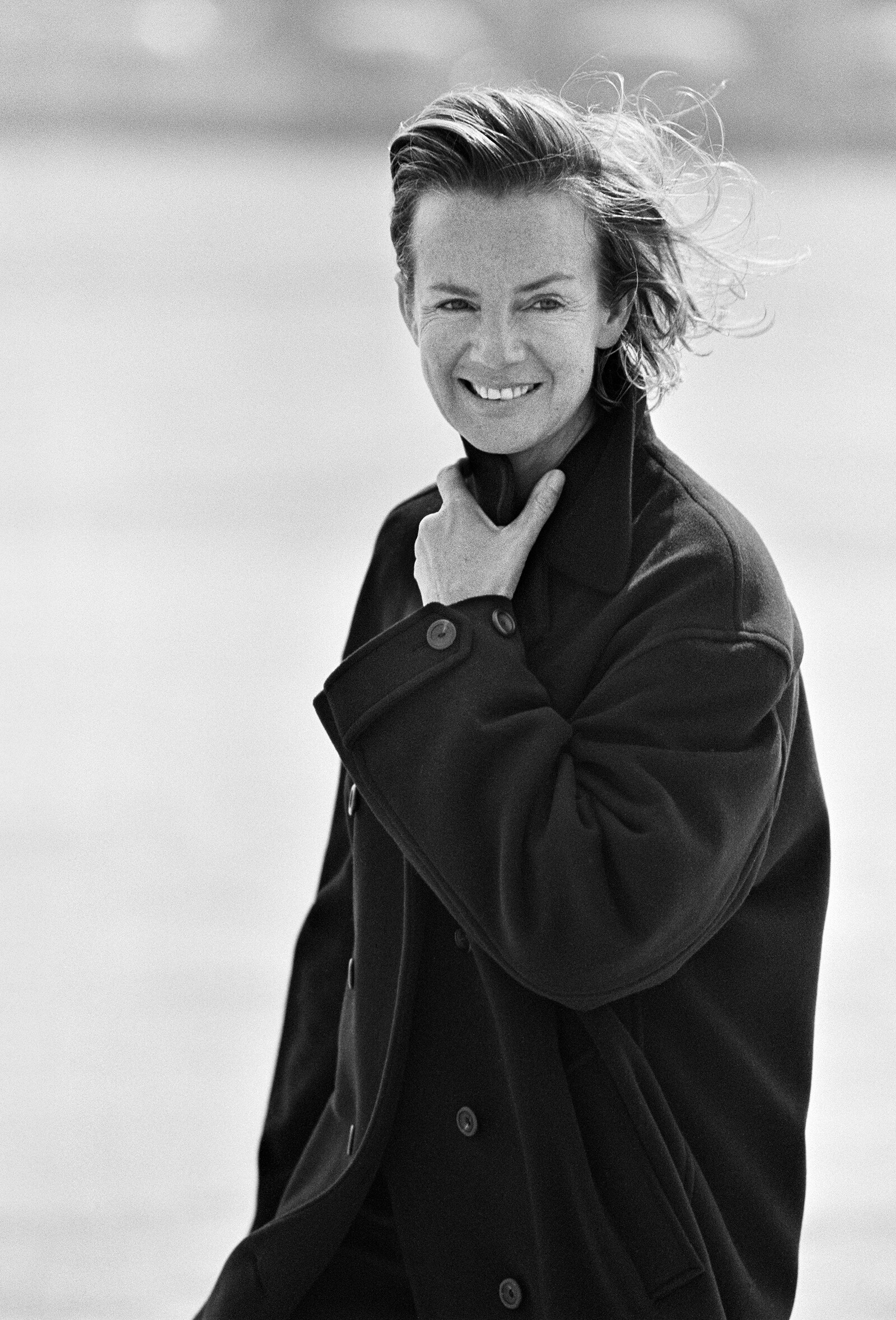November 4, 2017–May 6, 2018
Schaumainkai 17
60594 Frankfurt am Main
Germany
Hours: Tuesday–Sunday 10am–6pm,
Wednesday 10am–8pm
T +49 69 21231286
info.angewandte-kunst@stadt-frankfurt.de
Jil Sander is one of the most influential fashion designers of her generation. Her first solo exhibition ever to take place in a museum will consist of large-scale, multi-media installations and tableaus devoted to the impact of her design approach on the aesthetics, material and form of fashion and product design, architecture and garden art. The presentation, which could hardly be more multifaceted, will showcase the ingenuity and creative power of a designer whose primary objective is to bring out a person’s personality.
Jil Sander’s significance as a fashion designer is due to an extraordinary perceptivity which enabled her to anticipate trends and changes in society. She used them as a point of departure for developing unexpected, truly modern shapes in fashion. Her purism has transformed our notions of beauty and identity. Her design principles—harmony of proportion, sophisticated three-dimensionality, understatement and dynamic elegance—have always remained the same. And yet she has presented the fundamentals of her aesthetics in each of her collections in completely new ways.
With her decision to exhibit her work at the Museum Angewandte Kunst in Frankfurt/Main, Jil Sander has turned her attention to the past. This is quite a new experience for someone who has always prefered the up-and-coming. After an eighteen months long, intensive involvement of the designer, the exhibition opens as a multimedia spectacle, combining architecture, colour, light, film, sound, text, photography, fashion and art in dynamic spatial compositions. As such, the exhibition is less a retrospective overview than a fresh interpretation of the Jil Sander spirit and its aesthetics.
Jil Sander (*1943, Wesselburen, Germany) studies textile engineering at the Krefeld Textile School of Engineering. In 1964 she goes to Los Angeles as an exchange student. In the mid-1960s she returns to Hamburg to work as a fashion editor for various women’s magazines. What she sees does not correspond with her ideas of fashion, nor with her intuitions as to the seismographic shifts in the aesthetic demands of a rapidly advancing society. In 1968, Jil Sander opens her first store in the Hamburg district of Pöseldorf.
In contrast to the typical Parisian couture aesthetics, Jil Sander refers to German concepts of modernity. Her aesthetics go back to the Bauhaus vision of joining craftmanship and industrial production. She supports teamwork, enlightened seriality, prototype art as well as easily comprehensible and accessible structures. Even the ideas of German Classsicism find reflections in her work. In her campaign photography she is inspired by the art of graphic reduction typical for Neue Sachlichkeit.
Jil Sander’s design leads, by way of new cutting, weaving, processing and manufacturing techniques, to a new vestimentary language, a new way of dressing. It is always the material itself that remains at the centre of Jil Sander’s attention. She devotes herself intensively to the research of fabrics, imports state-of-the-art high-tech weaves from Japan and works with Italian producers on the development of new materials with sculptural tractability.
Jil Sander succeeds time and again in inspiring others with her concepts. Early on, she collaborates with Jürgen Scholz and his agency Scholz & Friends. With Peter Schmidt she develops flacons as well as her iconic brand logo. For the campaign photography—so crucial in fashion—she recruits photographers such as Peter Lindbergh, Irving Penn, David Sims, Nick Knight, Craig McDean, Mario Sorrenti and Jean-François Lepage.
Once her brand has been integrated into the Italian fashion company Prada, Jil Sander once again writes history with her +J collections for the worldwide Japanese clothing chain Uniqlo. In 2012 Jil Sander returns to the eponymous brand as creative director, a position from which she retires two years later for personal reasons. The brand name JIL SANDER is now owned by the Japanese firm Onward Holdings Co. Ltd.
Director: Matthias Wagner K
Curator: Matthias Wagner K in cooperation with Jil Sander
Press contact: Dorothee Maas, T +49 69 212 32828 / presse.angewandte-kunst [at] stadt-frankfurt.de
Sponsored by Dr. Marschner Stiftung, Ernst Max von Grunelius-Stiftung, Kulturfonds Frankfurt RheinMain, Stiftung Polytechnische Gesellschaft, Bankhaus Metzler Seel. Sohn & Co., Rat für Formgebung, PUMA SE, JIL SANDER Division, Onward Luxury Group SpA, Bonaveri, Coty
With support from Caparol Icons, ABN AMRO Bank, Beiten Burkhardt Rechtsanwaltsgesellschaft mbH, Antalis, Willkie Farr & Gallagher LLP


